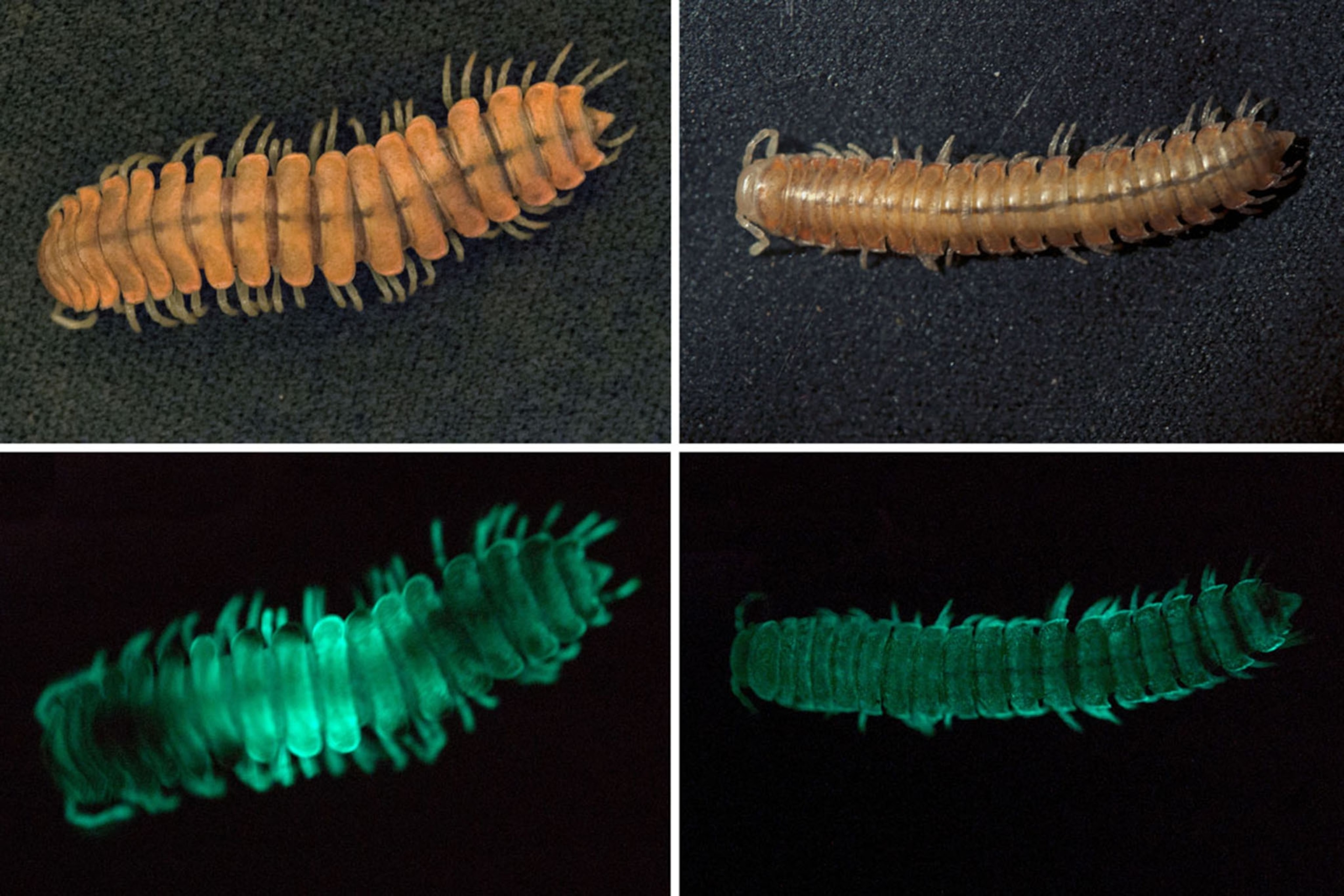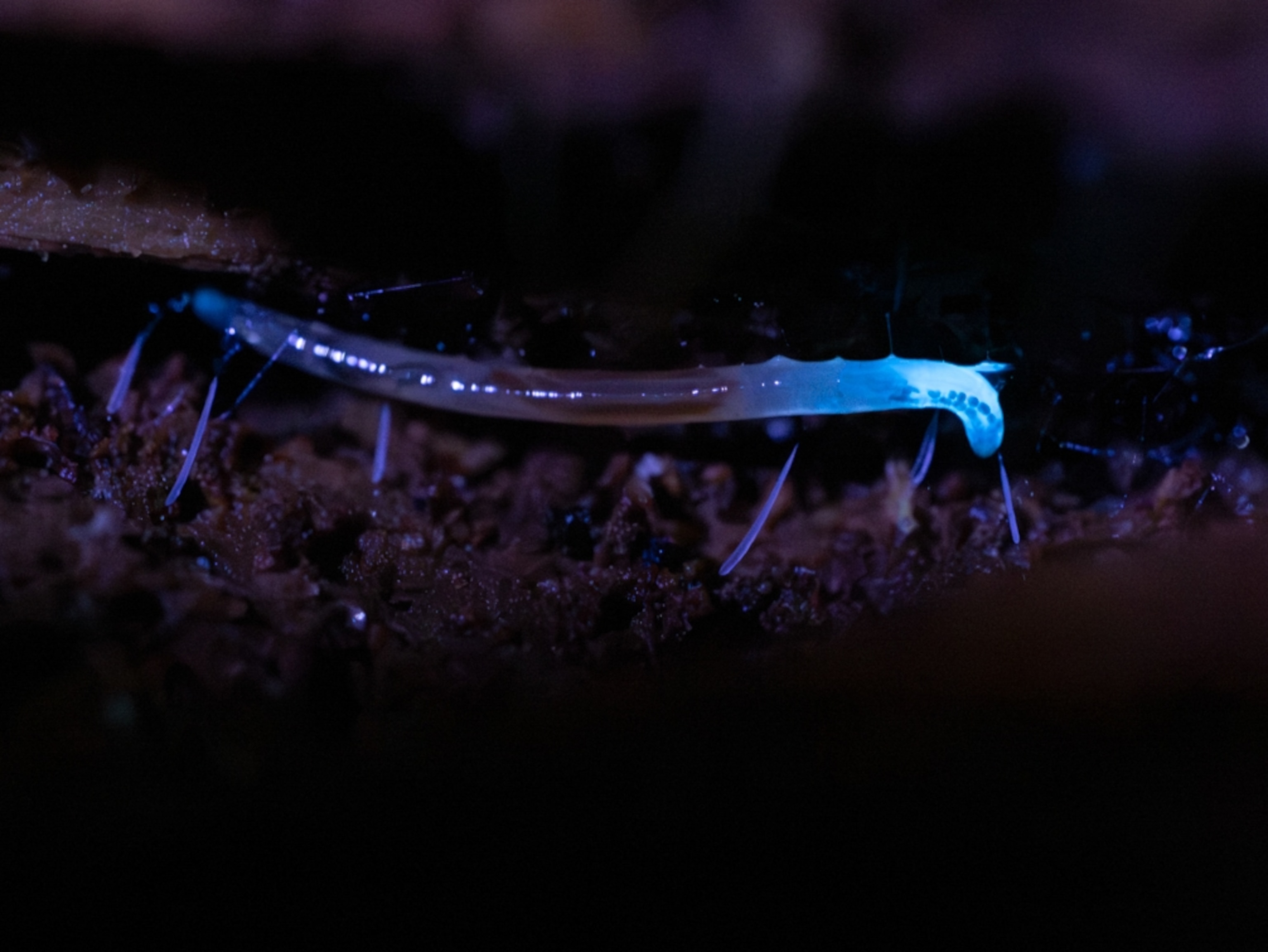New Glowing Millipede Found; Shows How Bioluminescence Evolved
Some California millipedes first evolved bioluminescence to cope with harsh desert living, according to scientists who may have cracked the mystery of glowing millipedes.
In California's Sierra Nevada Mountains (map) live a group of blind millipedes that glow in the dark—and now scientists have cracked the mystery of how their brightness evolved, a new study says.
Unlike fireflies, whose gleam emanates from a specialized organ on its abdomen, millipedes in the Motyxia genus give off a teal hue. These invertebrates have a special type of protein that allows them to produce light from beneath the tough cuticle that covers their bodies. (Also see "Glow-in-the-Dark Millipede Explained.")
These "species glow like a neon light. It's enough light to read something with if you get close enough," said Rowland Shelley, an emeritus scientist at the North Carolina State Museum of Natural Sciences who wasn't involved in the study.
Scientists already knew that these creatures' radiance serves as a warning to predators.
Now, Paul Marek and Wendy Moore entomologists at Virginia Tech and the University of Arizona, respectively, have discovered that the animals' bioluminescence first evolved for another reason entirely: To help them cope with California's hot, dry environment.

Surprise Glow
Previous research had shown that the ten known species of the Motyxia genus glow at different levels of brightness. Measuring just how much that brightness varies between species can reveal how luminescence evolved—an important goal of evolutionary biologists.
So the scientists collected several wild specimens all species of Motyxia, plus a control group of non-glowing, related millipedes known as Xystocheir. The team then set up experiments in the lab to measure the brightness of each species. (Related: "If You See a Glowing Millipede, Best Not to Bite It.")
"I thought it was going to be just another boring day in the lab," said Marek, who has received funding from National Geographic's Expeditions Council.
But then he made a surprising discovery: A faint glow emanating from one supposedly non-luminescent millipede species: Xystocheir bistipita, according to the study, published May 4 in Proceedings of the National Academy of Sciences.
The researchers then sequenced several genes in each Xystocheir and Motyxia species to determine how the millipedes were related to each other.
Their results, combined with X. bistipita's unexpected bioluminescence, showed that X. bistipita actually belongs to the Motyxia genus. The scientists renamed it Motyxia bistipita. (Also see "World's Leggiest Animal Found Near Silicon Valley.")

Let There Be Light
The study also revealed that M. bistipita evolved before other Motyxia—giving the team a theory for how millipedes got their glow.
Species such as M. bistipita, which live in low elevations of the Sierra Nevadas, have to cope with a much hotter, drier climate than other Motyxia. Their glow is also much dimmer, and they have fewer predators. (See more pictures of glowing animals.)
Based on the research, the team thinks these millipedes' low-watt glow isn’t a warning signal, but rather the result of their bodies' responses to heat stress.
For instance, millipedes have trouble metabolizing oxygen when it's really hot, which creates chemical byproducts such as peroxide. The bioluminescent proteins help neutralize these byproducts and prevent harm to the millipede.
Only later in time, as Motyxia colonized higher elevations with more predators, was the glow co-opted by evolution as a way to warn predators that the millipedes were toxic.
As evidence, the researchers found that the millipedes with the brightest glow also contained the most cyanide in their bodies. (Also see photos: "Cyanide Millipede, Huge Spider Among New Species.")
"The paper and work is very nice, and is a rare combination of real fieldwork with modest molecular methods," said Peter Vrsansky, a scientist at the Slovak Academy of Sciences who was not involved in the new research.
For his part, Marek calls the study "a surprising, unique evolutionary story."
Follow Carrie Arnold on Twitter.





